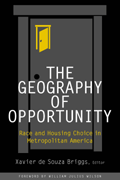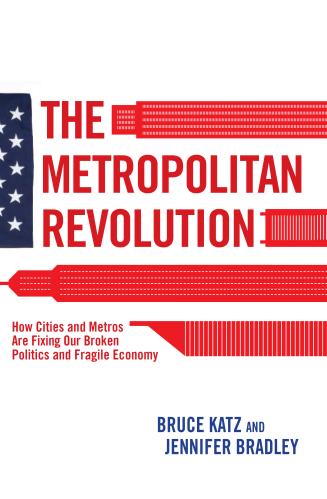With presidential politics in high gear, the United States appears to be heading for a frustrating year of partisan conflict and policy gridlock. Like nature, however, the U.S. abhors a vacuum. In previous decades, individual states have acted as “laboratories of democracy”. This moment finds U.S. metropolitan areas providing the sort of innovation and leadership sadly missing in Washington, and, in doing so, forming what might be called the “United Metros of America.” Three particular trends are of note.
First, metros are pursuing strategies that build on their distinctive strengths in the global economy. Before the recession, many cities and metros participated in the national consumption mania, pursuing uniform “Starbucks and stadiums” schemes that stamped eerily similar urban landscapes across the nation. But now there is a growing recognition that housing and consumption are derivative rather than driving sectors, and that lasting growth comes from using the productive sectors that vary markedly across disparate places. Metro leaders in Cleveland and Seattle understand this, and are adopting business plans that embrace their competitive assets – advanced manufacturing in Cleveland and clean technology in Seattle.
Perhaps the most dramatic shift has occurred in the nation’s first metropolis. Remember New York City’s economic vision circa 2005? A major sports and entertainment complex on the west side of Manhattan. Fast-forward to 2012, and one finds the city attracting Cornell University and the Technion-Israel Institute of Technology to a new science district. The prior plan is largely parasitic; the latter plan, catalytic.
Second – and related – metros are looking abroad for new growth possibilities, particularly in the rapidly growing cities and metropolitan areas of emerging nations. This reflects a new respect for the power of global demand, and represents a sharp deviation from the insularity and inward focus that has traditionally defined economic development in the U.S.
Los Angeles, Minneapolis-St.Paul, Portland and Syracuse are all inventing new export plans and institutions to build on their strengths, forging a powerful trading culture, particularly among entrepreneurial immigrants who retain strong ties to their countries of origin. These export initiatives will strike deep trade and investment relationships with cities in rising nations. This is a tantalising prospect: the emergence of a modern Hanseatic League, where cities and metropolitan areas form trading relations directly with their global counterparts, bypassing national governments.
Finally, metro innovations are inspiring states to catalyse and reward bottom-up economic growth strategies. Democratic governors in New York and Colorado and Republican Governors in Nevada and Tennessee are all placing their state resources in the service of local visions that are grounded in distinctive assets, oriented towards innovation and committed to performance.
Taken together, these metro and state actions are defining a new growth model for national leaders that is simple yet profound. Describe a vision of economic growth that is productive, sustainable and inclusive. Deliver this vision via strategic investments and public-private arrangements in finance, implementation and ownership. Collaborate to compete for the long haul across traditional lines of party, jurisdiction and sector.
Will the metro growth model become the national model for 2012 and beyond? Cities and metropolitan areas are not recognised in the American constitution. Due to cultural and structural reasons, the economic power of metropolitan areas far exceeds their political impact. But the vision they offer builds on deeply held American values, and responds to the palpable public yearning for hope and leadership. The most significant political event of 2012 may not be the presidential election but the emergence of the United Metros of America and the potential for national renewal from the ground up.







Commentary
Op-edGod Bless the United City States of America!
January 10, 2012